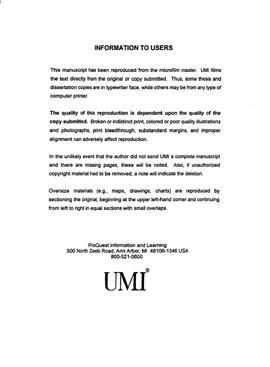| dc.contributor.advisor | Watson, Deborah, | en_US |
| dc.contributor.author | Mckinney, Brett Allen. | en_US |
| dc.date.accessioned | 2013-08-16T12:18:57Z | |
| dc.date.available | 2013-08-16T12:18:57Z | |
| dc.date.issued | 2003 | en_US |
| dc.identifier.uri | https://hdl.handle.net/11244/593 | |
| dc.description.abstract | Feshbach resonances notwithstanding, most experimentally realized atomic-vapor condensates are dilute and are best described by the mean-field Gross-Pitaevskii equation. For this reason, we use dimensional scaling methods to obtain an analytical approximation to the GP equation that is more accurate and flexible than the commonly used ground-state Thomas-Fermi approximation. We also demonstrate the power of dimensional perturbation theory by providing a full solution of a model BEC Hamiltonian and a two-electron quantum dot Hamiltonian. A feature shared by these examples is the high degree of accuracy provided by the lowest orders of the perturbation theory. In our approach to the full many-body BEC Hamiltonian, we use the lowest orders of many-body dimensional perturbation theory to obtain semi-analytical ground-state energies and collective excitation frequencies. Our many-body calculations for BEC's compare well with the Gross-Pitaevskii results in the weakly-interacting regime, as they should, and are much improved over mean-field theory predictions in the strongly-interacting regime. | en_US |
| dc.description.abstract | The focus of this thesis will be on the many-body physics of Bose-Einstein condensates (BEC). The achievement of BEC in magnetically trapped alkali-metal atoms in 1995 has generated a considerable amount of experimental and theoretical activity in recent years. In typical BEC experiments, the average distance between the bose atoms is much larger than the range of the atomic interactions, and hence, the properties of these weakly interacting condensates have been successfully described by the mean-field nonlinear Gross-Pitaevskii equation. Recently, however, no longer restricted to the atom's natural interaction parameter, experimentalists have created condensates with a "knob" (i.e., a Feshbach resonance) that allows them to adjust the interaction to whatever strength, repulsive or attractive, they wish. These strongly interacting condensates provide a new test bed for fundamental atomic and many-body physics. In this thesis we develop a theory that goes beyond the standard mean-field approximation for many-body systems. | en_US |
| dc.description.abstract | Systems that involve N identical, interacting particles under quantum confinement appear throughout many areas of physics, including chemical, condensed matter, and atomic physics. In this thesis, we present the methods of dimensional perturbation theory, a powerful set of tools that uses symmetry to yield simple results for studying such many-body systems. We present a detailed discussion of the dimensional continuation of the N-particle Schrodinger equation, the D → infinity equilibrium structure, and the normal-mode oscillations of this structure. We use the Wilson FG matrix method to derive general, analytical expressions for the many-body normal-mode vibrational frequencies, and we give analytical results for three N-body quantum-confined systems: the N-electron atom, N-electron quantum dot, and N-atom inhomogeneous Bose-Einstein condensate with a repulsive hard-core potential. | en_US |
| dc.format.extent | xii, 157 leaves : | en_US |
| dc.subject | Many-body problem. | en_US |
| dc.subject | Physics, Molecular. | en_US |
| dc.subject | Bose-Einstein condensation. | en_US |
| dc.subject | Physics, Atomic. | en_US |
| dc.subject | Perturbation (Quantum dynamics) | en_US |
| dc.title | Many-body dimensional perturbation theory for quantum confined systems with a focus on atomic gas Bose-Einstein condensates. | en_US |
| dc.type | Thesis | en_US |
| dc.thesis.degree | Ph.D. | en_US |
| dc.thesis.degreeDiscipline | Homer L. Dodge Department of Physics and Astronomy | en_US |
| dc.note | Source: Dissertation Abstracts International, Volume: 64-03, Section: B, page: 1294. | en_US |
| dc.note | Major Professor: Deborah Watson. | en_US |
| ou.identifier | (UMI)AAI3082950 | en_US |
| ou.group | College of Arts and Sciences::Homer L. Dodge Department of Physics and Astronomy | |
